Information
Fires
have been classified into four groups A, B, C, and D
- Class A fires - are fires involving organic solids like paper, wood, etc
- Class B fires - are fires involving flammable Liquids.
- Class C fires - are fires involving flammable Gasses
- Class D fires - are fires involving Metals .
![]()
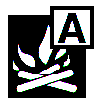
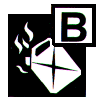
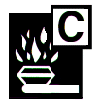
Electrical fires are not included, as they can fall into any of the classifications. However if you use a water extinguisher you must isolate the electric supply first as you could be electrocuted. In addition it must be remembered that certain electrical apparatus maintains a lethal charge for some time after it has been switch off.
What should you do if you discover a fire? You must get everyone out as quickly as possible and call the fire brigade.
However you
may discover a fire in its very early stages and think that you can
deal with it yourself. The first thing that you should remember is that
fire spreads very quickly. Even a small contained fire can quickly spread,
producing smoke and fumes which can kill in seconds. If you are in any
doubt do not tackle the fire, no matter how small.
You can put yourself at risk by fighting the fire.
If in doubt get out, get the brigade out, stay out.
New F Class for fire extinguishers
![]()
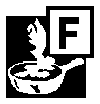
The British
Standards Institution (BSI) has published a standard introducing a new
fire classification for cooking oil and fat fires, Class F, in BS
7937: Specification for portable fire extinguishers for use on cooking
oil : 2000.
The standard, which was published in January, is available from BSI,
tel: 020 8996 9001, fax: 020 8996 7001. Price: £36 to non-members; £18
to members.
The standard includes a detailed description of the rigorous testing
extinguishers must successfully undergo to achieve the Class F test
fire rating
Before you tackle a fire.
Many people put out small fires quite safely. However, some people die or are injured by tackling a fires which are beyond their capabilities. Here is a simple fire code to help you decide whether to put out or get out.
- Only tackle a fire in its very early stages.
- Always put your own and other peoples safety first. Make sure you can escape if you need to and never let a fire block you exit.
- Fire extinguishers are only for fighting a fire in its very early stages. Never tackle a fire if it is starting to spread or has spread to other items in the room or if the room is filling with smoke. Around 70% of fire deaths are caused by people being overcome by smoke and fumes.
- If you cannot put out the fire or if the extinguisher becomes empty, get out and get everyone else out of the building immediately, closing all doors behind you as you go. Then ensure the fire brigade has been called.
Safety marks - buy wisely
Whatever type of make of fire extinguisher you choose, make sure if conforms to the appropriate British Standard BS EN 3 or BS 6165). Look for the kite mark or the special BAFE mark.
Where to fix your extinguisher
Fix an extinguisher where they can be reached quickly. The best place is on an escape route, that is near an outside door, or on an escape route leading to an outside door, or adjacent to a specific risk. It should be properly fixed to the wall at a height where it can be easily reached.
Fire extinguishers should be fixed where they can be easily seen. Fixing them inside cupboards or behind doors will only waste valuable time if a fire breaks out. Do not place them over cookers or heaters or in places of extreme temperatures hot or cold.
Maintenance
Manufacturers instructions will tell you what you need to do to keep your extinguisher in good working order. After an extinguisher has been used, even if only partially, it must be recharged according to the manufacturers instructions.
The extinguisher should be properly serviced once a year. You should use a company registered by the British Approvals for Fire Equipment (BAFE).
BAFE is a Government recognised national organisation. You can get details of approved products and advice from
British
Approvals for Fire Equipment,
48a Eden Street,
Kingston upon Thames,
Surrey, KT1 1EE
(Tel: 0181 541 1950).
Note. They can also supply a list of companies approved by them to service portable fire extinguishers.
Fire Rating
The calculated
the number and location of extinguishers required to protect an area
or a risk in a premises using class A and class B type extinguishers.
All extinguisher capable of extinguishing these types of fires carry
a Fire Rating which is indicated by a number and letter. (13A, 55B)
The number is the size of fire it can extinguish, the larger the number,
the larger the fire it can extinguish. The letter indicates the classification
of fire and is fully explained above. Some extinguisher like Dry Powder
carry both a class A and class B rating because of the properties of
the extinguishing medium.
To calculate the requirement for Class A fire you need to calculate
the floor area . Then you can decide the number of extinguishers you
need using the formula contained in this section. For class B fires
you calculate the area of the containers likely to be involved, or the
size of a possible spillage of flammable liquid. From this you can again
decide on the number of extinguisher required for the risk.
However there are many other consideration to be taken into account.
For instance there is a minimum number of extinguishers required on
each floor also you are advised not use foam extinguishers on spill
fires. All these are fully explained in this section and its appendices.
This is not the full description but is included to give you a flavour
of the British Standard regarding these matters and I would recommend
you obtain a copy of the standard which explains it in full.
Further information
Always follow the manufacturers instructions. If you require any further information about the type of fire extinguisher you should buy, ask your local fire brigade. They will be glad to help you and their expert advice is free of charge. They will also be able to provide you with general fire safety advice.
Types of Extinguisher
The type of extinguisher is identified by a colour code as indicated below. The old standard the extinguisher was painted entirely the colour of the appropriate colour code. You will find these in many premises and are legal , you do not need to change them unless the the extinguisher is defective and need to be replaced. New extinguisher use the new standard.
- The new standard is BS EN 3 part 5 "Portable Fire Extinguishers - Specification and supplementary tests"
- Water extinguishers are coloured signal red.
- Other extinguishers will be predominantly signal red with the manufacturers label, a band or circle covering at least 5% of the surface area of the extinguisher of a second colour to indicate the contents of the extinguisher. I prefer the band around the extinguisher if the new standard is used because it can be seen from any angle.
- The old standard, the
entire body of the extinguisher was colour-coded.
Consequently you may see any of the above methods of colour coding but the indicating colour always indicates the same type of extinguisher medium.
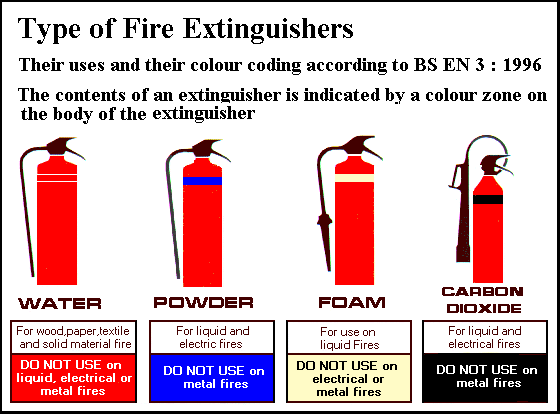
KERNICK
HOUSE
35
RECTORY ROAD
ST.STEPHENS
ST.AUSTELL
CORNWALL
PL26 7RJ